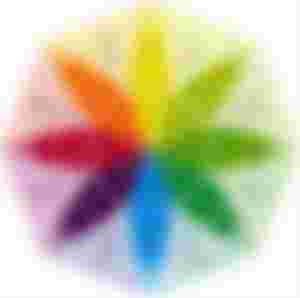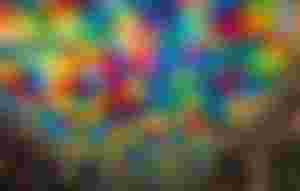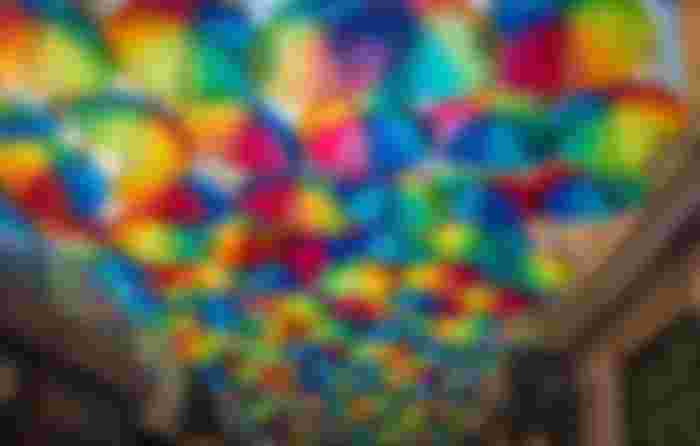Ever wanted to look at the huge blue sky? Have you ever felt anxious while being in a yellow room again? Or has the bluish aura ever filled your mind with peace? Artists and designers have long believed that color can bring about a dramatic change in a person's mood. Color brings a huge change in people's emotions, feelings, perceptions. Since ancient times, people have been using color as a means of communication and various types of signals. There are some dyes that contribute to an increase in blood pressure and physiological metabolism.

The famous scientist Sir Isaac Newton, in an experiment in 18, saw a transparent object in the shape of a prism, through which white light travels and splits into seven colors. Then he sees that each color has a different wavelength. Subsequent further experiments prove that light of different colors can be combined to form another completely different color. For example, combining a red light and a yellow light results in an orange light. When green and magenta are combined again, they reject each other and turn into white light.
We may have used these colors a lot in painting. Researcher Marcus Meyer noted,
"Surprisingly, very little theoretical or empirical work has been done to date on the effect of color on psychological functioning, and as far as experimental work is concerned, it has been mostly for practical purposes, not scientific rigor."
However, despite the general lack of scientific research on color, the psychological effectiveness of color is now an integral part of all marketing systems. This psychological functionality of color is applied very seriously in their designs and other places, starting from the advertisements of business organizations. Because, color plays a huge role in people’s attitudes, emotions, feelings and mental state and even decision making.
Feelings about color are often personal, again involving one's own experience or culture. For example, the most white color in the world is seen in western countries. It represents purity and simplicity to them, but in the East white was once considered a symbol of mourning.
The psychological effectiveness of color

Although perceptions of color are somewhat thematic, there are some color effects that have specific universal meanings. The colors in the red region of the color spectrum are known as warm colors and include red, orange, and yellow. These warm colors affect feelings ranging from feelings of warmth and comfort to anger and hostility. The colors included in the blue spectrum are blue, pink and green. These are considered to be cool colors, but these colors can give the impression of serenity as well as indifference.
Certain features are also considered in the case of certain colors. For example, behind the color red there is passion, love, affection, excitement and energy. This color stimulates our neurons and the use of red for attention is noticeable from the beginning. Blue is called the cool color, which carries the coolness of a serenity deep in your mind. This color keeps our brain calm. Some see the blue as a symbol of loyalty and peace. The color green is in stark contrast to the characteristics of red. Green is a symbol of softness and serenity.
White is considered a symbol of purity, neutrality, simplicity and emptiness. Again, the color black is said to be the most mysterious, in this black is hidden fear, anxiety, grief, death, grief. Pink, on the other hand, is considered a sensitive color; It is said that a wonderful combination of love and passion is found in pink. However, many psychologists disagree on how logical these meanings of color are. Because the change in the meaning of color is noticeable in different regions.
The use of color in therapy
Color is also used in therapy. Color has been used in various therapies since ancient times. Several ancient cultures, including the Egyptians and Chinese, practiced the use of dyes for chromotherapy or healing. Chromotherapy is sometimes referred to as light therapy or pigmentation. This treatment of color is still considered as an alternative treatment in some cases today.
The color red is used to stimulate the body and mind and increase physical circulation.
Yellow is thought to stimulate nerves and purify the body.
Orange is used to heal the lungs and increase energy levels.
Neel is believed to be effective in alleviating illness and relieving pain. Also light blue is thought to reduce skin problems. This color therapy is questionable to most psychologists, because color has different meanings in different cultures.
The mood-altering effects of color can only be temporary. A blue room may initially cause a feeling of calm, but the effect of this feeling is transient, disappearing after a short time. But color can affect people in many amazing ways.
Another study found that blue streetlights can reduce the crime rate more than any other warm light.
Red stimulates people to respond to more speed and energy abilities, and according to researchers, the effectiveness of red during athletic activities has been proven. The red color strengthens the body's response, so red light is used at the signal for immediate attention.
Black uniforms have a good chance of getting more punishment and negative attitudes. From a historical statistic of the sport, researchers found that a team player dressed in black was punished for aggressive behavior with his opposing team.
Color affects the emotional state of the students

Color has an effect on changing the mood of the students. No student wants red ink to ever appear on his exam marksheet. But the results of a study show that if a student sees red before the exam, it changes his mental state in a way that affects his performance later. Although the topics may seem strange to the reader, a survey was conducted with students from 61 colleges in the United States.
A five-minute test was taken. Before taking the test, one group of students is kept in the red room and the other group is kept in the green room for some time. Later, their test results showed that the students who were in the red room got 20 percent less marks than the students who were in the green room.

There is a growing interest in psychology in this area, but many unanswered questions remain. How is the development of color association? How strong is the influence of these associations on the conduct of real organizations? Can paint be used to increase worker productivity or workplace safety? Does any color have an effect on consumer behavior? Do people with certain personalities like certain colors? Jenna O'Connor, a faculty member in the Department of Architecture, Design, and Planning at the University of Sydney,
People must be aware of all the claims that people have about the psychology of color, and many of these claims lack the experience of loyalty.
Thanks
If you like it Upvote Can give.



